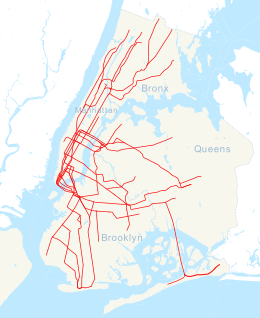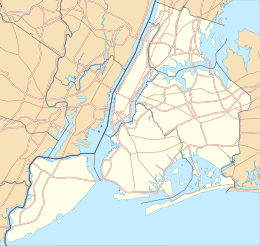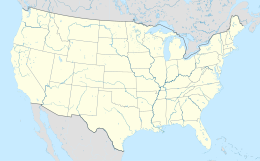57th Street–Seventh Avenue (BMT Broadway Line)

 Clash Royale CLAN TAG#URR8PPP
Clash Royale CLAN TAG#URR8PPP 57 Street–7 Avenue | |||||||||||||||
|---|---|---|---|---|---|---|---|---|---|---|---|---|---|---|---|
New York City Subway station | |||||||||||||||
 Downtown island platform | |||||||||||||||
| Station statistics | |||||||||||||||
| Address | West 57th Street & Seventh Avenue New York, NY 10019 | ||||||||||||||
| Borough | Manhattan | ||||||||||||||
| Locale | Midtown Manhattan | ||||||||||||||
| Coordinates | 40°45′56″N 73°58′48″W / 40.765461°N 73.980088°W / 40.765461; -73.980088Coordinates: 40°45′56″N 73°58′48″W / 40.765461°N 73.980088°W / 40.765461; -73.980088 | ||||||||||||||
| Division | B (BMT) | ||||||||||||||
| Line | BMT Broadway Line | ||||||||||||||
| Services | N Q R W | ||||||||||||||
| Transit connections | |||||||||||||||
| Structure | Underground | ||||||||||||||
| Platforms | 2 island platforms cross-platform interchange | ||||||||||||||
| Tracks | 4 | ||||||||||||||
| Other information | |||||||||||||||
| Opened | July 10, 1919 (1919-07-10)[1] | ||||||||||||||
| Station code | 009[2] | ||||||||||||||
| Accessible | |||||||||||||||
| Accessibility | Cross-platform wheelchair transfer available | ||||||||||||||
| Wireless service | |||||||||||||||
| Former/other names | Midtown–57th Street | ||||||||||||||
| Traffic | |||||||||||||||
| Passengers (2017) | 11,300,097[4] | ||||||||||||||
| Rank | 27 out of 425 | ||||||||||||||
| Station succession | |||||||||||||||
| Next north | Lexington Avenue–63rd Street (63rd): N Fifth Avenue–59th Street: N | ||||||||||||||
| Next south | 49th Street (local): N Times Square–42nd Street (express): N | ||||||||||||||
| |||||||||||||||
| |||||||||||||||
| |||||||||||||||
57th Street–Seventh Avenue is an express station on the BMT Broadway Line of the New York City Subway. Located in Midtown Manhattan at the intersection of 57th Street and Seventh Avenue, it is served by the N and Q trains at all times, the R train at all times except late nights, and the W train on weekdays.
On the subway map and on announcements, the station is called 57th Street–Seventh Avenue,[5] but is also sometimes called Midtown–57th Street. It is directly adjacent to Carnegie Hall.
Contents
1 Station layout
1.1 Elevators
1.2 Exits
2 Proposed extension
3 References
4 External links
Station layout
G | Street level | Exit/Entrance |
M | Mezzanine | Fare control, station agent (Elevator at SW corner of 57th Street and Seventh Avenue. Note: Platforms are not accessible) |
P Platform level | Southbound local | ← ← ← |
Island platform, doors will open on the left, right | ||
Southbound express | ← ← | |
Northbound express | → | |
Island platform, doors will open on the left, right | ||
Northbound local | → → | |
When this station opened on July 10, 1919,[6] the BMT Broadway Line had ended north of this station as six trackways, of which only two tracks (local tracks) continued to the 60th Street Tunnel to Queens. The other four trackways, both the express tracks and the outermost trackways (both of the outermost trackways are ramps which have never been used) curve slightly west before ending, which were a provision for the line to run to Upper Manhattan via Central Park West.[7]
With four tracks and two island platforms, this station is the northernmost express station on the BMT Broadway Line. Much of the BMT system is chained from the zero point here. The N, R, and W trains use the local tracks, which continue north under 59th and 60th Streets to Queens, while Q trains, limited weekday rush hour N trains and one weekday a.m. rush hour R train use the center express tracks to continue north along the BMT 63rd Street Line to Lexington Avenue–63rd Street and the Second Avenue Subway. Before the BMT 63rd Street Line was built in 1989, the express tracks continued as layup spurs north of the station (although construction of the 63rd Street line from 1971 to 1978 continued the section between this station and Lexington Avenue–63rd Street station). The express tracks ran for about 400 feet.
North of the station, the local tracks continue into the 60th Street Tunnel to Queens, while the express tracks continue to 63rd Street, with switches to the 60th Street tunnel. South of the station, there are also crossovers between the two express tracks, between both northbound tracks, and between both southbound tracks.[8]
This station underwent an overhaul in the late 1970s, which included fixing the station's structure and replacing the original wall tiles, old signs, and incandescent lighting with 1970s modern-look wall tile band and tablet mosaics, signs and fluorescent lights. Staircases and platform edges were also repaired.[citation needed]
Elevators
In 1992–1993, the station received a major overhaul with state-of-the-art repairs as well as upgrading the station for ADA compliance. The original late 1910s tiling was restored, repairs were made to the staircases, new tiling on the floors, upgrades to the station's lights and public address system, installation of ADA safety treads along the platform edge, new signs, and new trackbeds in both directions. Accessibility to the mezzanine was further increased by the addition of a usable elevator on the southwest corner of 57th Street. While elevators have yet to be installed for platform access, it allows disabled access to the fare booth and MetroCard vending machines. The MTA intends to provide ADA access to the platforms as part of the 2010–2014 Capital Plan.[9]
Elevators to the platforms have been under design for several years, with the MTA originally planning to award contracts in November 2013,[10] but the design process was delayed several years due to preexisting utilities blocking the way of the proposed elevator access.[11] Other issues included asbestos abatement, the lack of available space underground for the expansion of the mezzanine, and the need to negotiate with another developer to install elevators. The MTA started working on a revised design in September 2015. The construction award, and the beginning of construction finally occurred in December 2017, with completion estimated for December 2020.[12] Ultimately, the location of the platform elevators was moved to the southern end of the station, near 55th Street, necessitating the installation of a new street-to-mezzanine elevator at 55th Street.[10][13]
Exits
- Stair to NW corner of 7th Avenue and 57th Street[14]
- Stair to NE corner of 7th Avenue and 57th Street[14]
- Stair and elevator to SW corner of 7th Avenue and 57th Street[14]
- Stair to SE corner of 7th Avenue and 57th Street[14]
- Stair to NW corner of 7th Avenue and 55th Street[14]
- Stair to NE corner of 7th Avenue and 55th Street[14]
- Stair to SW corner of 7th Avenue and 55th Street[14]
- Stair to SE corner of 7th Avenue and 55th Street[14]
Proposed extension

55th Street stairs

57 Mosaic
North of this station are tunnel stub headings running straight from the local tracks[15] for a proposed line under Central Park West or Morningside Avenue, that would have terminated at 145th Street or 155th Street.
When the BRT / BMT was building the Broadway line as part of the Dual Contracts, the company also wanted to be awarded the Central Park West / Eighth Avenue route, which was on the planning boards at that time. The company figured that if they built ramps from the Broadway line that could naturally be extended to an Eighth Avenue line, they would get a toehold on being awarded that line, rather than lose out to the IRT, the only other subway operator when the Dual Contracts were built.[16] The BMT / BRT never built that line for various reasons including the bankruptcy of the company after the Malbone Street Wreck and Mayor Hylan's plan to include the Eighth Avenue / CPW route in the IND system. The ramps were built but never used for revenue service. They were eventually used for storage until the tracks were disconnected.
The disused trackways for the proposed line ramp up and run for about 500 feet.
The ramp on the northbound side has a Maintenance-of-Way shed built on it,[17] and the trackway on the southbound side also has a storage shed sitting in it, just north of where the local tracks come in, but this shed is few hundred feet north of the shed on the opposite trackway of the other side of the tunnel.
Some of the actual track on the trackways remain, but are covered by many years of dirt. They can be seen from passing trains. The never-used trackways curve slightly west before ending.[7][18]
References
^ "Broadway End of Subway Opened". The New York Times. July 10, 1919. p. 36.
^ "Station Developers' Information". Metropolitan Transportation Authority. Retrieved June 13, 2017.
^ "NYC Subway Wireless – Active Stations". Transit Wireless Wifi. Retrieved May 18, 2016.
^ "Facts and Figures: Annual Subway Ridership 2012–2017". Metropolitan Transportation Authority. July 12, 2018. Retrieved July 12, 2018.
^ "Subway Map" (PDF). Metropolitan Transportation Authority. January 18, 2018. Retrieved January 18, 2018.
^ Legislative Documents. J.B. Lyon Company. January 1, 1920.
^ ab http://www.nycsubway.org/wiki/New_Subways:_Proposed_Additions_to_Rapid_Transit_System..._(1922) "Section on Broadway Subway Expansion"
^ "www.nycsubway.org: New York City Subway Track Maps". www.nycsubway.org. October 9, 2015. Retrieved October 9, 2015.
^ "The MTA's Key Station Plan for subway accessibility - The Weekly Nabe". The Weekly Nabe. June 13, 2013. Retrieved February 16, 2018.
^ ab "Transit and Bus Committee Meeting February 2018" (PDF). Metropolitan Transportation Authority. February 20, 2018. p. 326. Retrieved February 18, 2018.
^ "Capital Program Oversight Committee Meeting" (PDF). mta.info. Metropolitan Transportation Authority. July 24, 2017. p. 84. Retrieved August 31, 2017.
^ "T6041311 ADA Accessibility at 57 St Station on the Broadway Line - Phase 2". web.mta.info. Metropolitan Transportation Authority. Retrieved September 3, 2017.
^ Schmidt, Linda (April 26, 2018). "Midtown shops worry about subway elevator construction". WNYW. Retrieved 2018-05-01.
^ abcdefgh "MTA Neighborhood Maps: Midtown West" (PDF). mta.info. Metropolitan Transportation Authority. 2015. Retrieved December 11, 2015.
^ BMT7thAvenueExpress (October 17, 2009), RFW of The Brooklyn Bound R Part 2: Lexington Avenue to 14th Street Union Square, retrieved February 16, 2018 A trackway is visible towards the right at the 2:51 mark into this video, just before the train enters the 57th Street station.
^ Senate, New York (State) Legislature (January 1, 1916). Documents of the Senate of the State of New York. E. Croswell.
^ BMT7thAvenueExpress (August 31, 2009), RFW of The Queens Bound R Part 6: 23rd Street to Lexington Avenue, retrieved February 16, 2018 The shed is visible to the right at the 5:15 mark in the video, as the train leaves the 57th Street station.
^ Anastasio, Joe (June 19, 2005). "The BMT Provision". LTV Squad. Retrieved February 16, 2018.
External links
| Wikimedia Commons has media related to 57th Street (BMT Broadway Line). |
- nycsubway.org – BMT Broadway Subway: 57th Street
- Station Reporter – N Train
- Station Reporter – R Train
- Station Reporter – Q Train
- MTA's Arts For Transit – 57th Street–7th Avenue (BMT Broadway Line)
- 57th Street entrance from Google Maps Street View
- 55th Street entrance from Google Maps Street View
- Platform from Google Maps Street View






Comments
Post a Comment